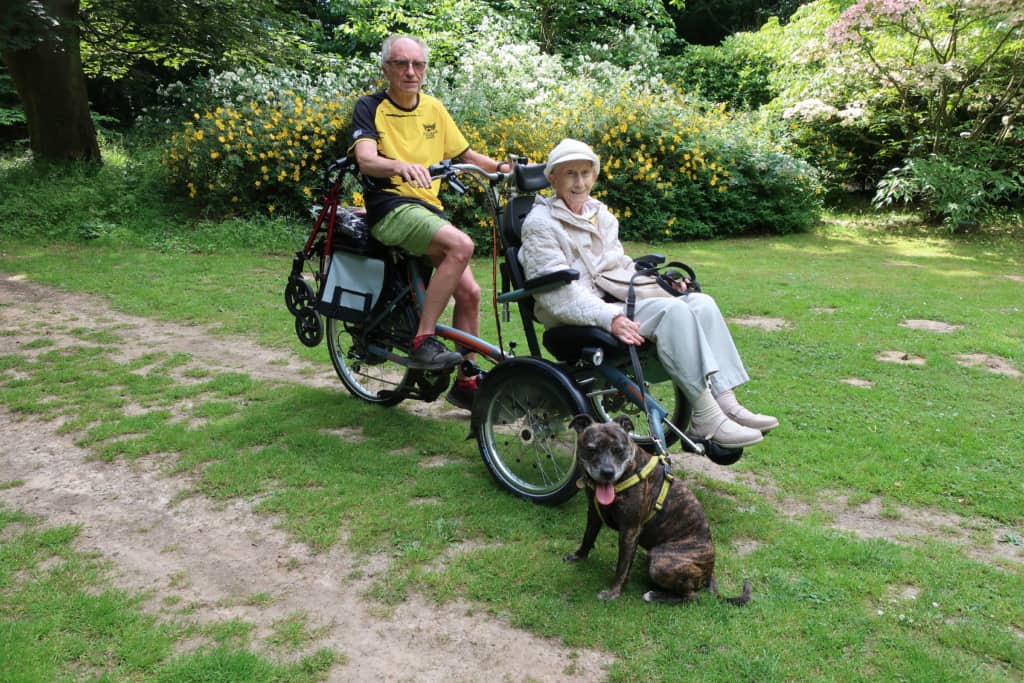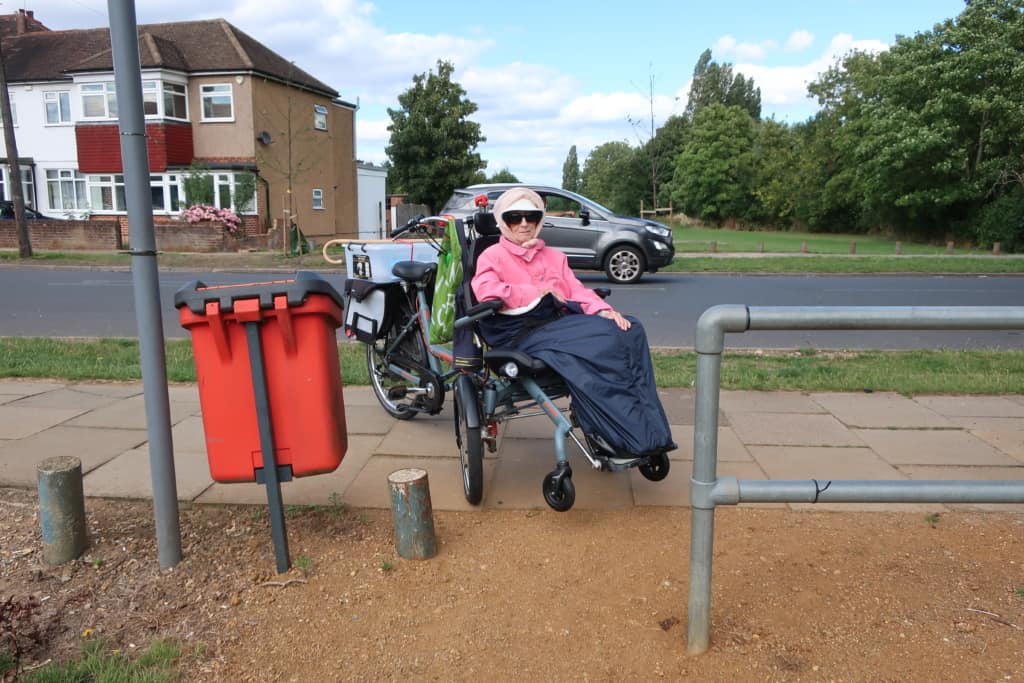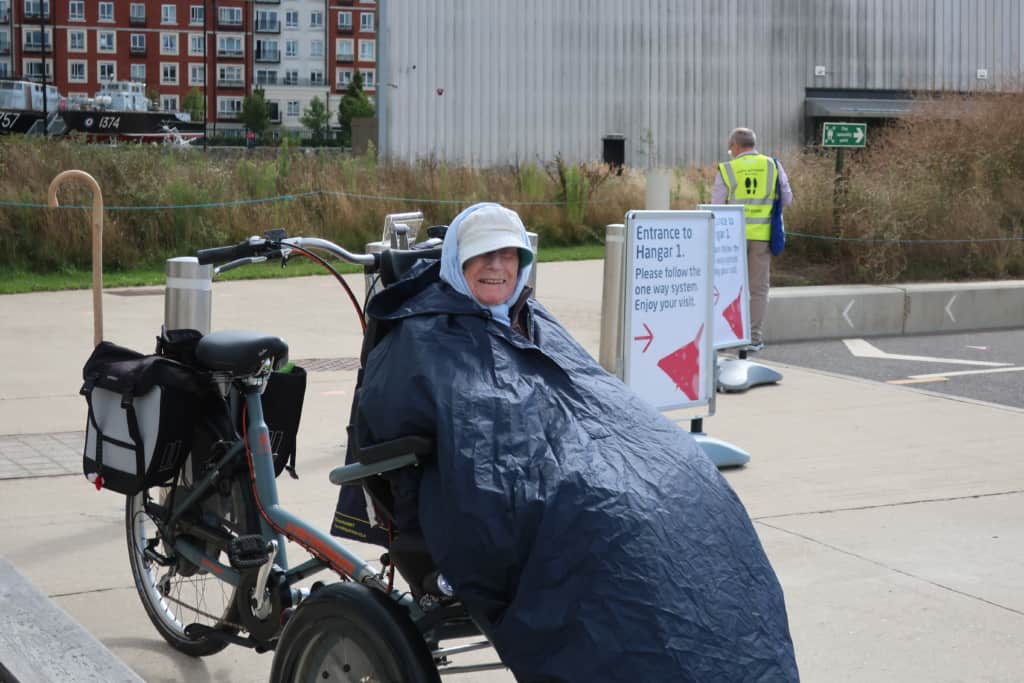Deciding on the perfect cycle: a wheelchair tandem
From her late eighties and into her nineties, Kay found walking increasingly painful because of arthritis. She started to use an electric buggy, which for years allowed her to visit the local shops and park with family members, but gradual hearing and sight loss made it no longer practical – if you can’t recognise the line and height of a kerb, then you fear running out of control or even overturning.

It was still possible for Kay to go for short walks with a rollator, but the park and shops were too far away for her family to push a wheelchair. They also had concerns that Kay would become dependent on the wheelchair and start having difficulties getting into and out of a car as a result.
In response, Kay’s family made contact with Wheels for Wellbeing. They drove over to one of our drop-in inclusive cycling sessions and tried out various adapted cycles at the enclosed, off-road venue of Croydon Sports Arena. The experience was such a pleasure and proved that Kay would once again be able to pop out locally with her family!

Of all the cycles at the session, Kay found that the wheelchair tandem was the most suitable device –the lack of pedals would reduce the risk of falling or injury to her legs, and its dimensions meant that the cycle could be stored where the electric buggy was previously. Kay’s family bought a Van Raam O’Pair from Tomcat Trikes in 2019, and later that same year hired a van and went for a cycling holiday in rural Norfolk. The roads were so quiet that with careful control, the family dog could run in its harness alongside! Kay says that one of the biggest challenges she faced early on was the perceived loss of control: “I was used to steering the buggy and it was difficult to get used to somebody else doing that. You have to trust the cyclist behind you.”
The power of cycling
Since purchasing a wheelchair tandem, Kay has been able to “…get out more and get fresh air. I can see slightly more when on the cycle as I’m not having to look down at the ground. I can see the shapes of trees and buildings against the sky. We can go further than if I was walking. It’s pleasant to encounter other people. It’s fun when people show an interest in the cycle and we get talking.”
Kay’s daughter has said the following: “I like to show people that cycling has many possibilities for everybody. It’s much easier to pedal the cycle on the road than to push a wheelchair on the pavement.”

Kay and her family have really enjoyed cycling during lockdown, as the roads have been quieter and clearer. They weren’t allowed to cycle through and visit some places, but they could cycle around a lot of different streets in the local area, which they say felt more like cycling in the park or when on holiday in Norfolk!
Not always a smooth ride: the barriers to cycling
Here is what Kay’s daughter has said about cycling on a wheelchair tandem:
“It’s not like steering a bicycle – the balance is quite different; you have to turn the handlebars differently, but you get used to it quite quickly. You are responsible for another person, but you are higher up and very stable, so you can look all round and take decisions carefully.
The biggest difficulty is the variable quality of the road itself. There is often a deep camber on the shoulder of the road, which sends the trike lop-sided, so it’s better to go nearer the middle. As during lockdown there has been so much less traffic, you can see the pot-holes, drain-covers and difficult surfaces more easily and so can pull out to avoid them. The crown of the road is where you can see furthest ahead, meaning that drivers can also see us from further away. Drivers usually react positively when they see this intriguing device coming towards them, and they generally give us plenty of space (sometimes even a thumbs up!). From going onto the pavements when visiting the shops, I have learnt how difficult the dropped kerbs and tight turns must be on a mobility scooter.”
